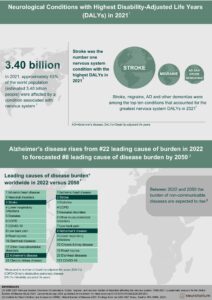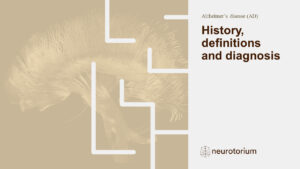- Acetylcholine is a major neurotransmitter in the brain1
- In patients with AD, cholinergic neurons are progressively lost, reducing levels of acetylcholine1
- ChEIs target cholinesterase enzymes (AChE and BuChE) and inhibit the breakdown of acetylcholine.1-3This increases the availability of acetylcholine at the cholinergic synapses.1,2
- Currently available FDA-approved ChEIs for the treatment of mild, moderate and severe AD are donepezil, rivastigmine, and galantamine1
Acess our Slide Deck on Treatment principles of Alzheimer’s disease (AD) and learn more about treatment with cholinesterase inhibitors.





